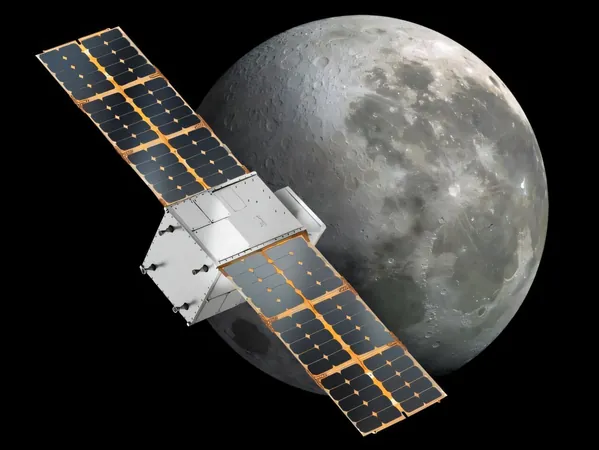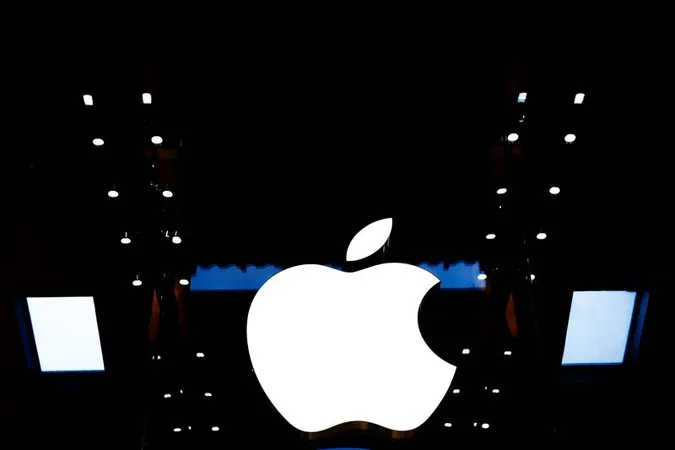
Unlocking the Moon: How Nanosatellites Could Pave the Way for Lunar Settlements
2025-05-01
Author: Noah
Revolutionizing Lunar Exploration with Nanosatellites
What role could nanosatellites play in our quest to explore and settle the moon? A groundbreaking study presented at the 56th Lunar and Planetary Science Conference addresses this question, showcasing research by a team from Grahaa Space in India. Their findings could transform how scientists, engineers, and future lunar astronauts develop and test essential technologies for both lunar exploration and potentially venturing beyond.
A Universe of Possibilities
The researchers highlighted a range of applications for nanosatellites once they are placed in lunar orbit. These tiny powerhouses could revolutionize tasks like mapping, navigation, resource identification, and communication between Earth, the moon, and future lunar settlements. Imagine harnessing nanosatellites to monitor lunar weather, support human habitats, conduct scientific research, and even employ AI for intelligent decision-making. With a cost-effective and efficient approach, nanosatellites could facilitate both scientific missions and human expeditions.
Meet the Nanosatellite: The Future of Space Tech
Nanosatellites, measuring around 10 x 10 x 10 centimeters (3.9 inches on each side) and weighing a mere 1 to 10 kilograms (2.2 to 22 pounds), have already proven their worth in Earth and lunar missions. The most prevalent type, the CubeSat, has been successfully utilized for various commercial and scientific purposes. For instance, Planet Labs uses them for Earth observation, while NASA's LunaH-Map mission in 2022 employed a CubeSat to enhance lunar mapping.
A New Era in Space Exploration?
This study paints a promising picture, claiming that "the potential applications of nanosatellite technology for lunar exploration and settlement represent a paradigm shift in our approach to space exploration." By tapping into these small but mighty satellites, we can tackle the myriad challenges of establishing a sustainable human presence on the moon.
Private Ventures and NASA's Lunar Vision
As part of NASA's Commercial Lunar Payload Services (CLPS) program, several private space companies, including Firefly Aerospace, Intuitive Machines, Blue Origin, Dynetics, SpaceX, and Astrobotic, are working hard to create a lunar infrastructure. They're developing critical technologies like landers, rovers, and resource mining systems. Notably, Firefly Aerospace recently made history by landing a spacecraft on the lunar surface—an achievement that highlights the potential of private contributions to lunar exploration.
Challenges on the Lunar Frontier
However, not all efforts have been successful; Intuitive Machines' attempts to launch lunar landers resulted in two failures, underscoring the challenges ahead. Despite setbacks, the excitement around the Artemis program builds as NASA prepares to return humans to the moon for the first time since Apollo 17 in 1972, aiming to land the first woman and person of color on the lunar surface.
The Road to Mars Begins Here
By establishing essential technologies for future lunar missions, we take critical steps towards a permanent human settlement on the moon. Ultimately, these advancements are also designed to pave the way for human missions to Mars, as outlined in NASA's ambitious Moon to Mars Architecture. The future of space exploration looks brighter than ever!









 Brasil (PT)
Brasil (PT)
 Canada (EN)
Canada (EN)
 Chile (ES)
Chile (ES)
 Česko (CS)
Česko (CS)
 대한민국 (KO)
대한민국 (KO)
 España (ES)
España (ES)
 France (FR)
France (FR)
 Hong Kong (EN)
Hong Kong (EN)
 Italia (IT)
Italia (IT)
 日本 (JA)
日本 (JA)
 Magyarország (HU)
Magyarország (HU)
 Norge (NO)
Norge (NO)
 Polska (PL)
Polska (PL)
 Schweiz (DE)
Schweiz (DE)
 Singapore (EN)
Singapore (EN)
 Sverige (SV)
Sverige (SV)
 Suomi (FI)
Suomi (FI)
 Türkiye (TR)
Türkiye (TR)
 الإمارات العربية المتحدة (AR)
الإمارات العربية المتحدة (AR)